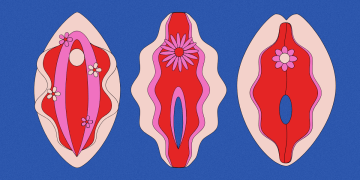Dr Ben D’Souza has worked in paediatrics for three decades, and is currently an emergency physician at the Women’s and Children’s Hospital – making him the perfect person to answer all your lingering questions about virtual care for kids.
Meet Dr D’Souza
Dr Ben D’Souza is a paediatrician by qualification, with further training in paediatric emergency. He has worked in the field of paediatrics across 30 years and two countries (India and Australia), and has been a Consultant Paediatric Emergency Physician at the Women’s and Children’s Hospital since 2012. He’s also a recipient of the Humanitarian Overseas Service Medal for his work in Pakistan and the Philippines with The Australian Government’s disaster assistance response teams, and is now the medical head for the WCH’s Child and Adolescent Virtual Urgent Care Service – aka CAVUCS.
What is CAVUCS?
CAVUCS is a platform parents and caregivers can log onto for an emergency consultation with a virtual team of highly skilled emergency doctors and nurses, without presenting into an ED. CAVUCS is a statewide service, and the only paediatric model of virtual care in South Australia. Better yet, it’s free.
“During the pandemic we were all scrambling for ways to deliver healthcare differently,” says Dr D’Souza. “That’s when the virtual concept arose, and we [the Women’s and Children’s Hospital] became the first paediatrics emergency department in the country to offer a virtual, patient-facing service.”
By having a conversation with an expert from the comfort of home, families could avoid the trouble of presenting at emergency departments or doctor surgeries unnecessarily.
“It means we can see the right patients at the right time and place,” says Dr D’Souza.
How can people access the service?
CAVUCS is available to any child aged between 6 months and 18 years. Accessing the service is super simple:
- Head to the Women’s and Children’s Hospital website using your preferred device (mobile, tablet, desktop or laptop);
- Click on ‘Do you have an emergency?’, followed by the Child and Adolescent Virtual Urgent Care Service link;
- Click ‘Register for the Virtual Urgent Care Service’;
- Fill out the form including your details and the patient’s details (you’ll need your Medicare card handy), then wait to be connected – it shouldn’t take long.
What would you say to parents concerned about the quality of virtual care versus in-person care?
“The patient’s safety is always front of mind,” says Dr D’Souza. “We must see that virtual care is not lesser care.”
“The form you fill out identifies where urgent care is needed, and those patients will be immediately sent to emergency,” says Dr D’Souza. “We’ve done a lot of risk analysis and modelling in the planning stages, and have the expertise to make the right decision for the individual.”
The fact that 26,000 of the 27,000 patients who’ve utilised CAVUCS have been kept out of emergency is proof of this, says Dr D’Souza. “When a face-to-face service is needed, we will of course facilitate that,” he says.
What are the benefits of virtual care?
“We know that parents and carers prefer care closer to their home – if it can happen safely within their four walls, it’s a bonus,” says Dr D’Souza. “CAVUCS prevents them from being in a crowded waiting room, exposed to other sick children or contacts.”
There are benefits for regional patients, too – a third of patients who’ve used the service live regionally. Not only does CAVUCS give them access to healthcare not otherwise easily accessible, it also saves them time, fuel and money, says Dr D’Souza.
Our hospitals and doctors also benefit. CAVUCS works closely with the SA Ambulance Service, meaning paramedics who don’t think patients need to be taken to emergency can call in advance. Less patients presenting to emergency departments means more resources – including beds – are available to those who really need them.
Can people still go straight to the ED if they prefer?
Of course.
“Every patient has the right to go to the ED, but we’re there as an additional service to give the right advice and reassure people whether they do need to go,” says Dr D’Souza.
“We provide the education, safety netting and advice required to ensure every patient’s safety, including the red flags to look out for.
“And we can provide all the resources you need including links and handouts.”
Long story short, CAVUCS should be thought of as an additional service, not a replacement of traditional healthcare methods. It’s about getting more people the healthcare they need, not less.
To find out more about the Women’s and Children’s Hospital’s free Child and Adolescent Virtual Urgent Care Service, click here.

















